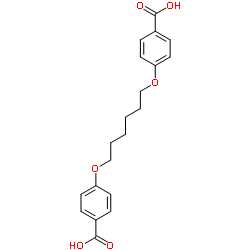A novel electron paramagnetic resonance-based assay for prostaglandin H synthase-1 activity.
Catriona M Turnbull, Danny McClure, Adriano G Rossi, Ian L Megson
文献索引:J. Inflamm. (Lond.) 3 , 12, (2006)
全文:HTML全文
摘要
Prostaglandin H2 synthase (PGHS) is the enzyme that catalyses the two-stage conversion of arachidonic acid to prostaglandin H2 (PGH2) prior to formation of prostanoids that are important in inflammation. PGHS isozymes (-1 and -2) are the target for nonsteroidal anti-inflammatory drugs (NSAIDs). Given the rekindled interest in specific anti-inflammatory PGHS inhibitors with reduced unwanted side effects, it is of paramount importance that there are reliable and efficient techniques to test new inhibitors. Here, we describe a novel in vitro electron paramagnetic resonance (EPR)-based assay for measuring the activity of PGHS-1.We validated a novel in vitro PGHS-1 activity assay based on the oxidation of spin-trap agent, 1-hydroxy-3-carboxy-pyrrolidine (CPH) to 3-carboxy-proxy (CP) under the action of the peroxidase element of PGHS-1. This quantifiable spin-adduct, CP, yields a characteristic 3-line electron paramagnetic (EPR) spectrum.The assay is simple, reproducible and facilitates rapid screening of inhibitors of PGHS-1. Aspirin (100 microM, 1 mM) caused significant inhibition of spin-adduct formation (72 +/- 11 and 100 +/- 16% inhibition of control respectively; P < 0.05). Indomethacin (100 microM) also abolished the signal (114 +/- 10% inhibition of control; P < 0.01). SA and the PGHS-2-selective inhibitor, NS398, failed to significantly inhibit spin-adduct generation (P > 0.05).We have demonstrated and validated a simple, reproducible, quick and specific assay for detecting PGHS-1 activity and inhibition. The EPR-based assay described represents a novel approach to measuring PGHS activity and provides a viable and competitive alternative to existing assays.
相关化合物
| 结构式 | 名称/CAS号 | 分子式 | 全部文献 |
|---|---|---|---|
 |
1,6-双(4-羧基苯氧基)己烷
CAS:74774-53-1 |
C20H22O6 |
|
Hemagglutinin-based polyanhydride nanovaccines against H5N1 ...
2015-01-01 [Int. J. Nanomedicine 10 , 229-43, (2015)] |
|
Polyanhydride Nanoparticle Delivery Platform Dramatically En...
2015-01-01 [PLoS Negl. Trop. Dis. 9 , e0004173, (2015)] |
|
Upregulation of FLJ10540, a PI3K-association protein, in ros...
2015-01-01 [Biochem. Pharmacol. 93(1) , 34-41, (2015)] |
|
Anti-inflammatory activity of Chios mastic gum is associated...
2011-01-01 [Nutr. J. 10 , 64, (2011)] |
|
Design of an injectable system based on bioerodible polyanhy...
2002-11-01 [Biomaterials 23 , 4405, (2002)] |